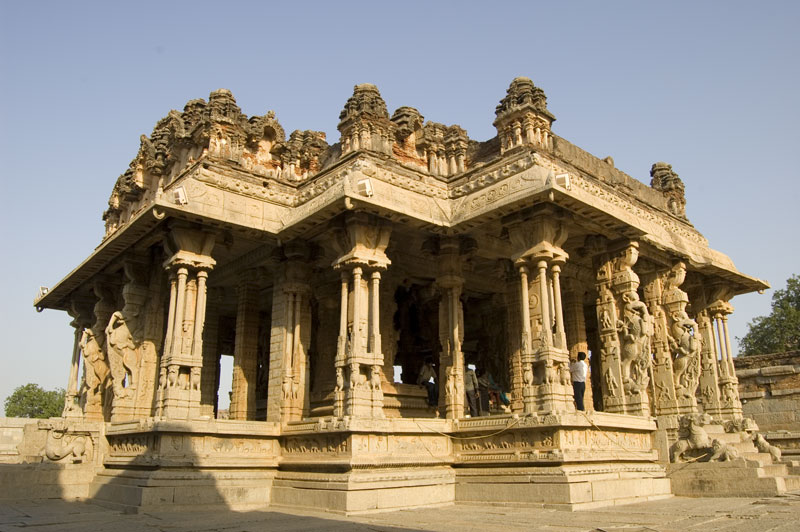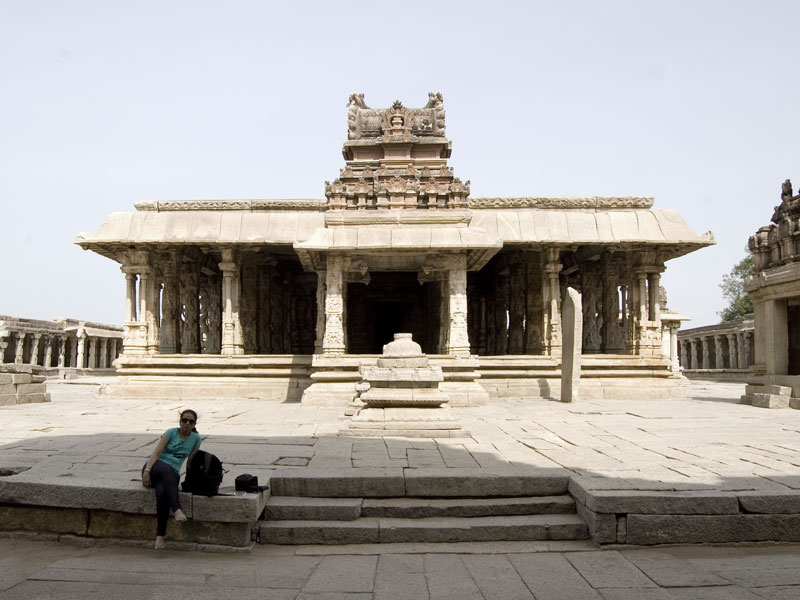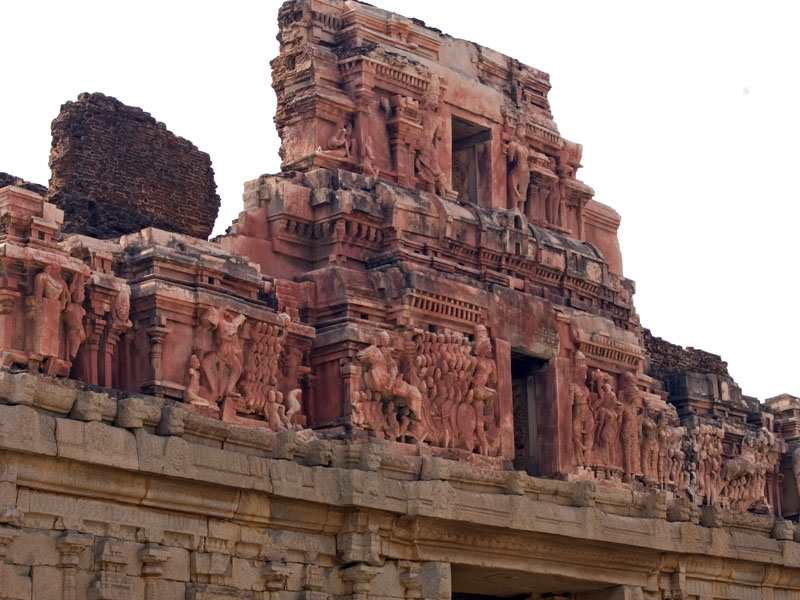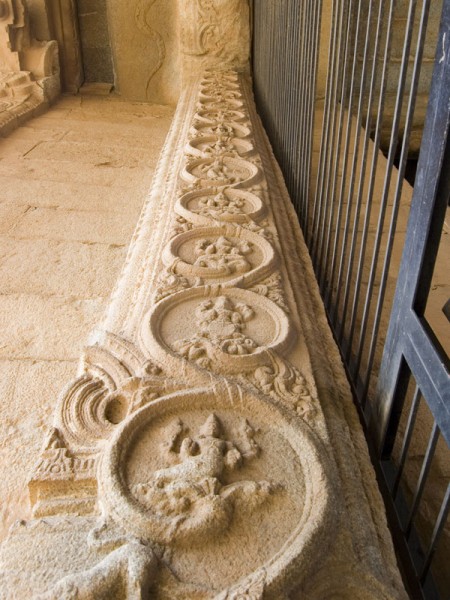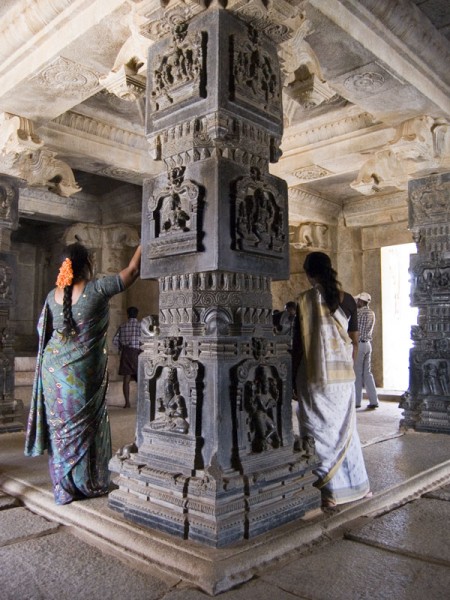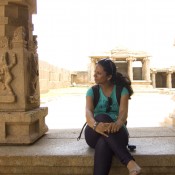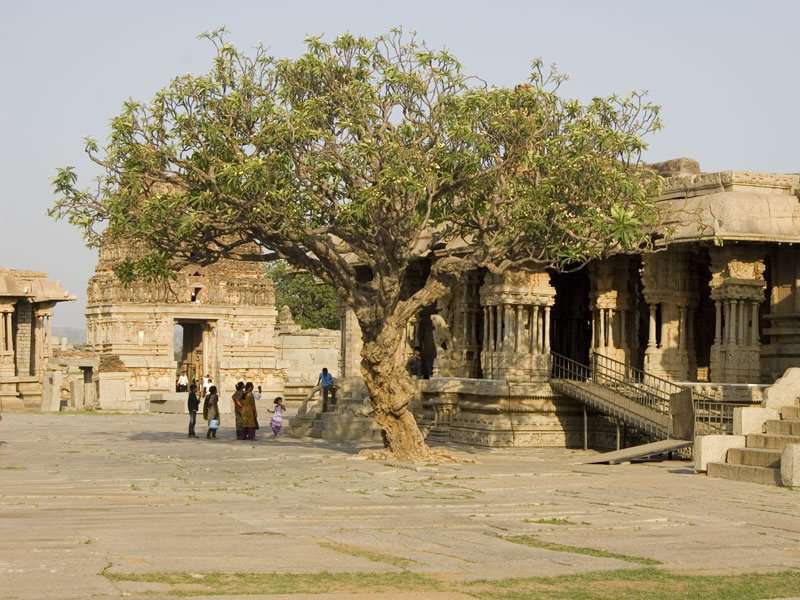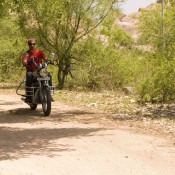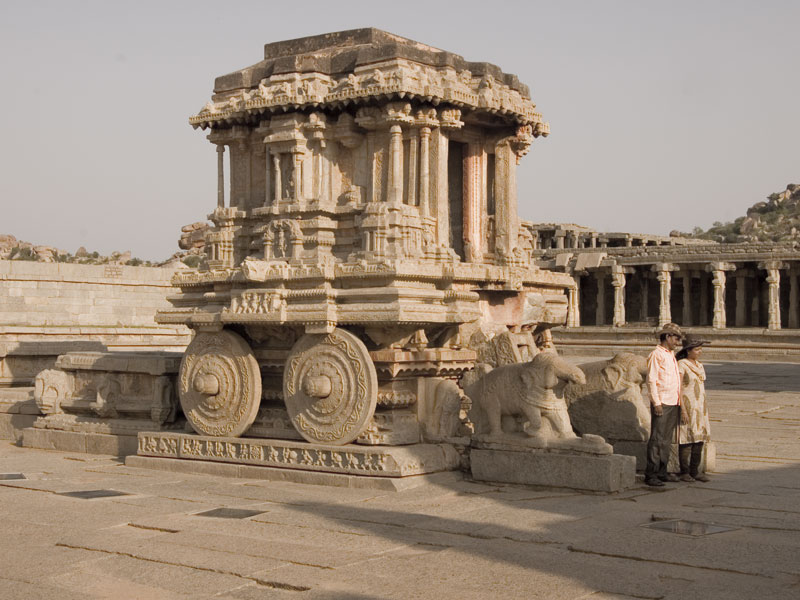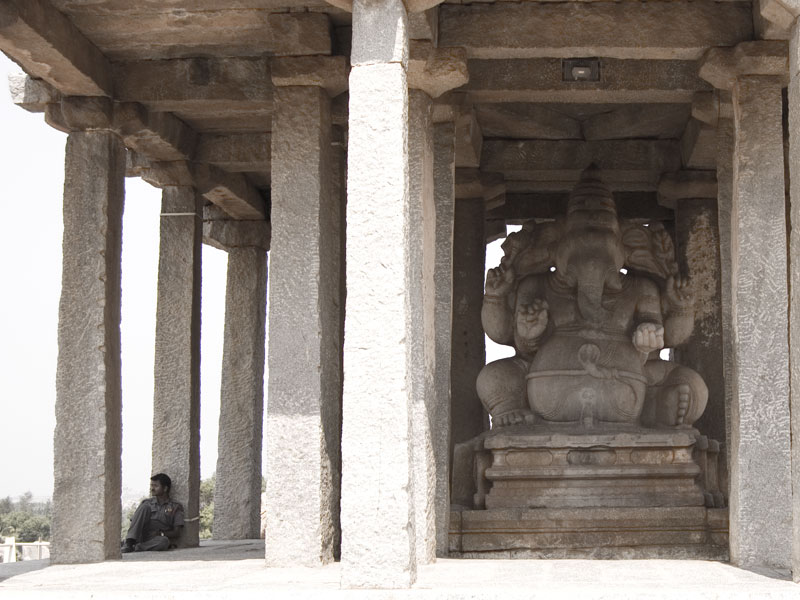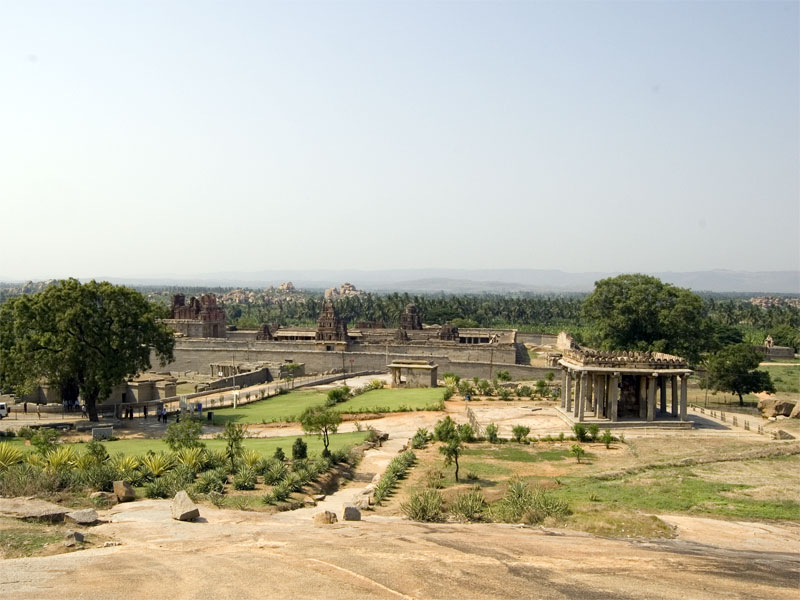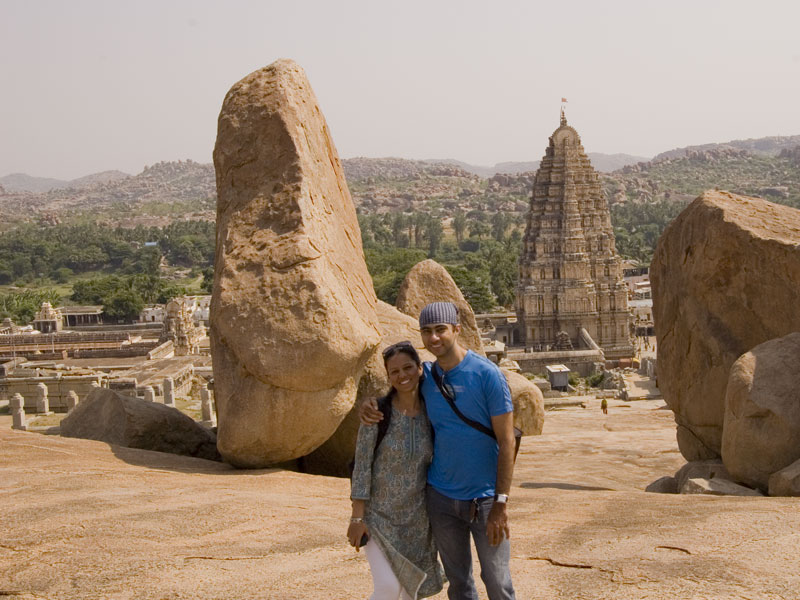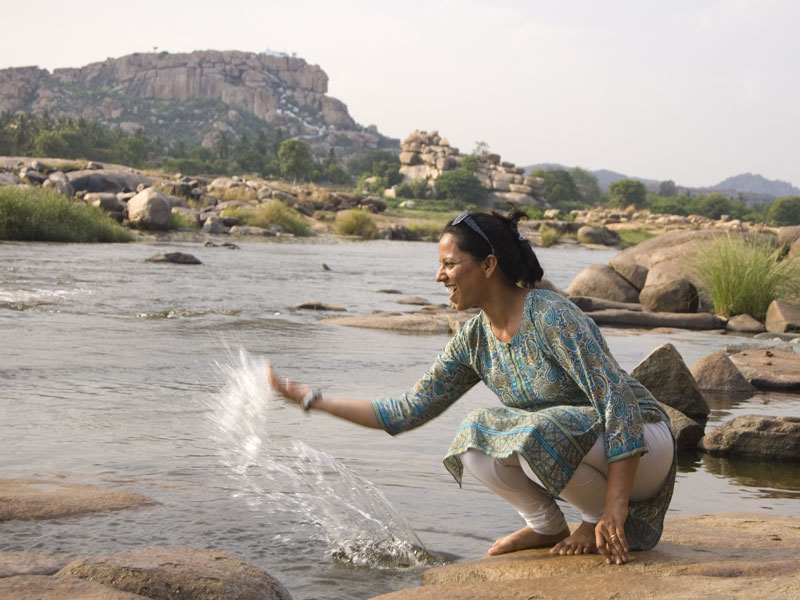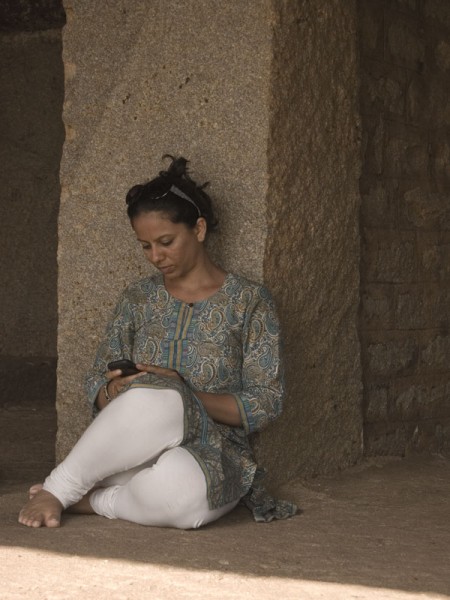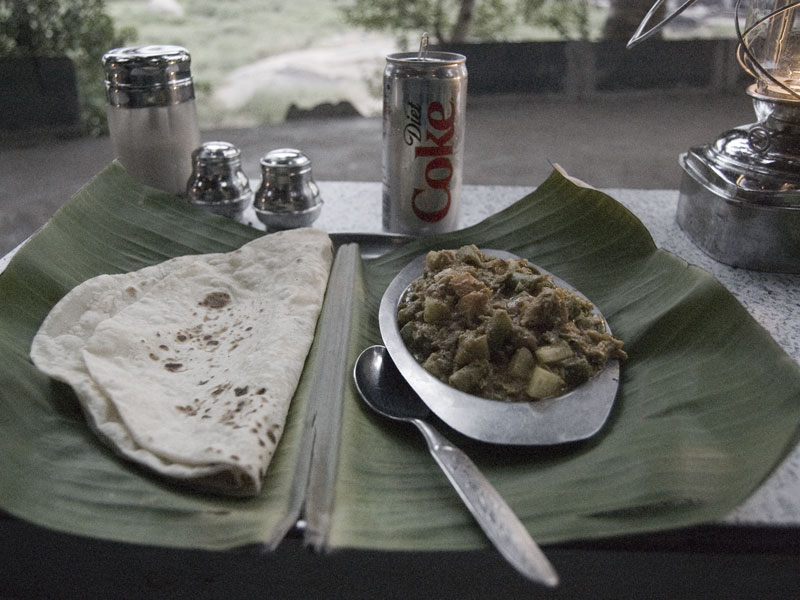The week had passed by surprisingly fast. We were on the last (or second-last) day of our trip. There was still uncertainty around whether we wanted or would be able to ride the 500 kilometres to Pune in a single day. All rides so far had been in the range of 200-300 kilometres, although road quality had played a big factor in those decisions. Other than the 150 odd kilometres of state highways between Badami and Belgaum, we were looking at excellent surface quality on NH4.
We left at 6:30 am, as soon as daylight was firmly established. Most of the delay was caused due to waiting for the petrol bunk outside Badami to start operations for the day. It probably would have taken longer, given that most of the employees were still dozing. But some persistent honking by a truck and a tempo roused these guys much sooner.
Bike fueled up, we set off. Part of both of us wished to find a restaurant or even a roadside shack to grab a bite at. But the roads were featureless, and pretty empty too at that hour. The only respite were the infrequent hamlets that we periodically encountered. However, the early hour and mild climate helped ease any discomfort. The countryside was beautiful, and though we did not stop frequently, the sights were soothing nevertheless.
The first major halt we made was at Ramdurg, 50 kilometres out of Badami. Poor road surfaces for half the way accounted for most of the hour and a half taken to arrive here. But all was forgotten as we tucked into warm idlis and coffee at an Udipi restaurant.
After breakfast, we headed off again to pass by Torgal a few kilometres away. While historical significance of the fort at Torgal evades me today, some pre-tour research had indicated that it was a relatively well-preserved stone-built fort. Protected with two layers of walled bastions, it would have made a daunting fortification in its time. Within the bastions lie several buildings and Torgal village itself. Among the buildings of note are the Bhoothnath Temple and a mosque. The ASI is actively working on restoration and maintenance of this structure.
On any other day, we would have had time to stop and admire this structure. But being pressed for time, and my strong desire to return to Pune by day end meant we had to give it a pass.
The Belgaum-Bagalkot road after Yaragatti again was an excellent surface to ride upon, although scattered patches of heavy vehicles and a ghat in between still ate into a significant amount of time. All said and done, we were in Belgaum only at around 12:00 noon. Meeting Anvith again made taking the longer route completely worthwhile. We chatted over lunch and more ice creams before finally bidding goodbye to him and Belgaum on this trip.
NH4 was a welcome sight after the morning session on narrow state highways. A bunch of other motorcyclists passing in the opposite direction were the only eventful incident that occurred until Nippani, where we stopped for our first breather. Our seats were getting uncomfortable now and the sun was stinging. We soldiered on after a bit of stretching, and managed to get up to Kolhapur without any pauses.
The short shadows from the time of leaving Belgaum had elongated a bit by now. Hunger and thirst forced us to stop here, and the cool environs of a local cafe kept us comfortable for an hour or so. Their soft sofa cushions were a welcome relief from an entire day astride the motorcycle saddle. At 4 pm, we reluctantly left the cafe and began the rest of the ride.
Beleaguered by the relatively bad road quality in Maharashtra and fatigue from riding all day, progress was very slow, although our averages were still quite great due to excellent riding in the morning and afternoon sessions. We reached Surur at 5:00 pm and stopped for food and water. Ami was close to passing out from the sun by now. Rest and food helped restore some sanity, but she remained quiet for the time that we were stopped.
We left from Surur at 5:40 pm, with about 45 minutes of daylight left. I intended to make the most of this time by covering the distance up to Shirwal at the least. We were a little ahead at Kapurhol when the sun finally sank behind the hills over the horizon. We continued to make good time for the remaining half an hour of natural light, managing to cross the toll booth near Khed-Shivapur.
From here onward we took it easy as darkness had set. It was 7:30 pm when we finally got off the highway at Sinhagadh Road. We stopped for dinner along the way within the city, before reaching home exhausted but happy at well past 10 in the night.
It had been a long day.
